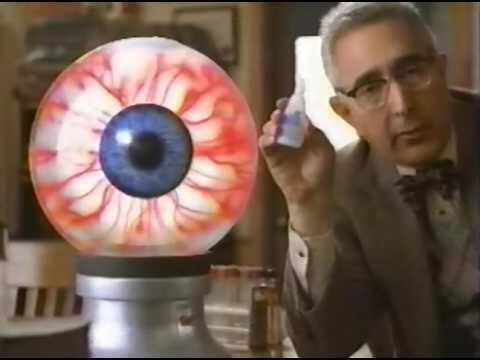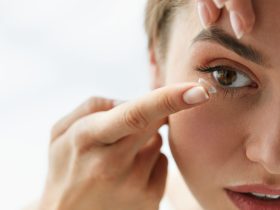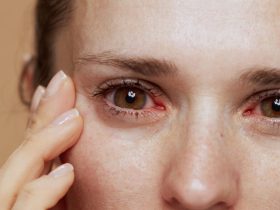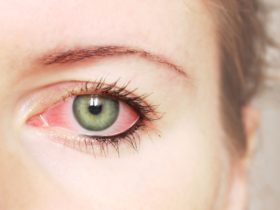Dry eyes are caused by insufficient tear production or poor tear quality. Symptoms include irritation, redness, and blurred vision.
Dry eyes can be a frustrating and uncomfortable condition affecting millions. This common issue occurs when your eyes don’t produce enough tears or the tears evaporate too quickly. Various factors contribute to dry eyes, including age, environmental conditions, and prolonged screen time.
Recognizing the symptoms early, such as irritation, redness, and blurred vision, can help in seeking timely treatment. Effective management strategies include using artificial tears, making lifestyle changes, and seeking professional advice. Taking proactive steps to address dry eyes can significantly improve your comfort and overall eye health.

Credit: www.youtube.com
Causes Of Dry Eyes
Dry eyes can be a troublesome condition. Various factors contribute to this issue. Understanding these causes can help in managing and preventing dry eyes.
Environmental Factors
Many environmental factors can cause dry eyes.
- Low Humidity: Air with low moisture can dry out eyes. This often happens indoors with air conditioning or heating.
- Wind and Dust: Windy conditions or dusty environments can irritate eyes. This can lead to dryness.
- Pollution: Air pollution can also affect eye moisture. Pollutants in the air can irritate the eyes.
Lifestyle Habits
Certain lifestyle habits can also cause dry eyes.
- Screen Time: Long hours in front of screens can reduce blinking. This can lead to dry eyes.
- Contact Lenses: Wearing contact lenses for extended periods can dry out eyes.
- Diet: A diet low in omega-3 fatty acids can impact eye health. Consuming more omega-3s can help maintain moisture.
- Smoking: Smoking or being around smoke can dry out and irritate eyes.
Symptoms To Watch For
Dry eyes can be very uncomfortable. Knowing the symptoms helps in identifying the problem early. This section will highlight the common signs and when to see a doctor.
Common Signs
There are several signs that indicate dry eyes. Below is a list of the most common symptoms:
- Redness: Eyes may appear red and irritated.
- Itching: Persistent itching is a key sign.
- Burning Sensation: A burning feeling in the eyes.
- Excessive Tearing: Paradoxically, eyes may produce more tears.
- Blurry Vision: Vision might become unclear.
When To See A Doctor
Sometimes, dry eyes need medical attention. Consider seeing a doctor if you experience any of the following:
- Severe Symptoms: If symptoms are intense and unrelenting.
- Persistent Discomfort: If discomfort does not improve with over-the-counter treatments.
- Impact on Daily Life: If dry eyes interfere with daily activities like reading or driving.
- Use of Contact Lenses: If you wear contacts and experience dry eyes.
- Associated Health Issues: If you have other health conditions that might be related.
Recognizing these symptoms early can help manage dry eyes effectively. Stay alert to these signs and seek professional help when needed.
Over-the-counter Solutions
Experiencing dry eyes can be uncomfortable and frustrating. Luckily, there are several over-the-counter solutions to help relieve symptoms. This section explores some popular choices available without a prescription.
Artificial Tears
Artificial tears are a popular choice for treating dry eyes. These lubricating eye drops provide temporary relief by adding moisture to the eyes.
- Available in different formulations: preservative-free and with preservatives.
- Preservative-free drops are ideal for frequent use.
- Some brands offer thicker gel drops for nighttime use.
Using artificial tears regularly can help maintain eye moisture. It’s important to follow the instructions on the packaging for the best results.
Eye Drops
Eye drops for dry eyes come in various types. Each type addresses different causes of dryness.
| Type | Purpose |
|---|---|
| Lubricating Drops | Provide moisture and lubrication. |
| Anti-Redness Drops | Reduce redness and irritation. |
| Prescription-strength Drops | Used for more severe cases. |
Lubricating drops are the most common. They help add moisture to the eyes. Anti-redness drops can soothe irritation and reduce redness. For severe dryness, prescription-strength drops may be necessary.
Always read the labels and instructions carefully. This ensures you are using the right product for your needs.
Prescription Treatments
Dry eyes can be uncomfortable. Prescription treatments help relieve symptoms. Doctors offer various options based on the severity of dryness. Let’s explore the most common prescription treatments.
Medicated Eye Drops
Medicated eye drops provide relief by reducing inflammation. They help increase tear production. These drops often contain cyclosporine or lifitegrast. They are used daily for long-term relief.
- Cyclosporine (Restasis): Increases tear production. Used twice daily.
- Lifitegrast (Xiidra): Reduces inflammation. Used twice daily.
Oral Medications
Oral medications can also treat dry eyes. They work by increasing tear production. These are often tetracycline antibiotics or other anti-inflammatory drugs.
| Medication | Usage |
|---|---|
| Doxycycline | Reduces eye inflammation. Taken daily. |
| Minocycline | Improves tear stability. Taken daily. |
These medications are typically prescribed for short-term use. Always follow your doctor’s instructions.
Home Remedies
Dry eyes can be uncomfortable and irritating. Luckily, several home remedies can help. Simple lifestyle changes and home treatments can provide relief. Here are some effective remedies to consider:
Warm Compress
Using a warm compress can help soothe dry eyes. It increases blood flow and stimulates oil production. Follow these steps:
- Soak a clean cloth in warm water.
- Wring out excess water.
- Place the cloth over your closed eyes.
- Leave it on for 5-10 minutes.
- Repeat 2-3 times a day.
This method helps to unblock oil glands and improve tear quality.
Humidifiers
A humidifier can add moisture to the air. This helps to prevent your eyes from drying out. Consider the following benefits of using a humidifier:
- Keeps air moist in dry environments.
- Reduces eye irritation from dry air.
- Improves overall comfort in your home.
Place a humidifier in your bedroom or living area. This ensures a consistent level of humidity. It can significantly reduce dry eye symptoms.
Diet And Nutrition
Understanding the role of diet and nutrition in managing dry eyes is crucial. What we consume affects our body’s ability to produce and maintain healthy tears. This section explores how proper hydration and beneficial nutrients can alleviate dry eyes symptoms.
Hydration Importance
Staying well-hydrated is essential for eye health. Drinking enough water helps maintain tear production. Aim for at least eight glasses of water daily. This keeps the eyes moist and comfortable.
Dehydration can lead to dry eyes. Avoid excessive caffeine and alcohol. These can cause dehydration.
Beneficial Nutrients
Certain nutrients support eye health. Including these in your diet can help manage dry eyes.
| Nutrient | Sources | Benefits |
|---|---|---|
| Omega-3 Fatty Acids | Fish, flaxseeds, chia seeds | Reduces inflammation, promotes tear production |
| Vitamin A | Carrots, sweet potatoes, spinach | Maintains healthy cornea |
| Vitamin C | Citrus fruits, strawberries, bell peppers | Supports blood vessels in the eyes |
| Vitamin E | Almonds, sunflower seeds, avocados | Protects eyes from free radical damage |
| Zinc | Beef, chickpeas, pumpkin seeds | Aids in the transport of Vitamin A |
Incorporate these nutrients into your daily meals. A balanced diet supports overall eye health.
- Omega-3 fatty acids reduce eye inflammation.
- Vitamin A keeps the cornea healthy.
- Vitamin C strengthens eye blood vessels.
- Vitamin E protects from free radicals.
- Zinc helps transport Vitamin A to the eyes.
Improving diet and hydration can significantly help with dry eyes. Make these changes for healthier, more comfortable eyes.
Lifestyle Changes
Dry eyes can be uncomfortable and disruptive. Making simple lifestyle changes can help. Learn how to manage screen time and choose proper eyewear.
Screen Time Management
Extended screen time can strain your eyes. Here are some easy tips to manage it:
- Take breaks every 20 minutes to rest your eyes.
- Blink often to keep your eyes moist.
- Use artificial tears to lubricate your eyes.
- Adjust screen brightness to match room lighting.
- Keep screens at a comfortable distance from your eyes.
Proper Eyewear
Wearing the right eyewear can protect your eyes. Consider the following options:
| Type | Benefits |
|---|---|
| Blue Light Glasses | Reduce strain from digital screens. |
| Prescription Glasses | Correct vision and reduce eye strain. |
| Sunglasses | Protect eyes from harmful UV rays. |
Choose eyewear that suits your daily needs. Consult an eye doctor for personalized advice.

Credit: www.ispot.tv
Advanced Treatments
Dry eyes can be uncomfortable and irritating. Advanced treatments provide relief and improve eye health. Discover some effective solutions to manage dry eyes.
Punctal Plugs
Punctal plugs are tiny devices inserted into the tear ducts. They block tear drainage and keep the eyes moist. This treatment is quick and painless.
- Non-surgical method
- Temporary or permanent options
- Suitable for moderate to severe dry eyes
Punctal plugs help maintain natural tears on the eye surface longer. This reduces dryness and discomfort.
Thermal Pulsation
Thermal pulsation therapy treats Meibomian gland dysfunction. It uses heat and gentle pressure to unclog blocked glands.
| Benefit | Details |
|---|---|
| Improves tear film quality | Enhances lipid layer |
| Long-lasting relief | Effects last for months |
| Non-invasive | Comfortable and quick |
Thermal pulsation targets the root cause of many dry eye cases. It provides a lasting solution to discomfort and dryness.

Credit: www.reddit.com
Frequently Asked Questions
What Causes Dry Eyes?
Dry eyes are caused by insufficient tear production or poor tear quality. Factors include aging, environment, screen time, and certain medications.
How Can I Treat Dry Eyes?
Treat dry eyes by using artificial tears, taking breaks from screens, and avoiding dry environments. Consult your doctor for severe cases.
Are There Home Remedies For Dry Eyes?
Yes, warm compresses, staying hydrated, and using a humidifier can help alleviate dry eyes at home.
Can Screen Time Worsen Dry Eyes?
Yes, prolonged screen time can worsen dry eyes. Take regular breaks and blink frequently to reduce strain.
Conclusion
Dry eyes can affect anyone and disrupt daily life. Finding the right commercial solution brings relief and comfort. Prioritize your eye health by choosing products designed to moisturize and protect. Stay informed and consult with professionals for the best results.
Remember, healthy eyes mean a happier life. Keep your eyes refreshed and comfortable always.








